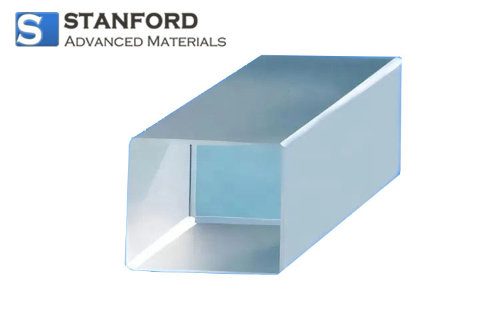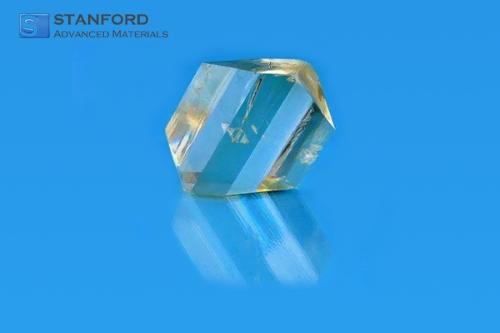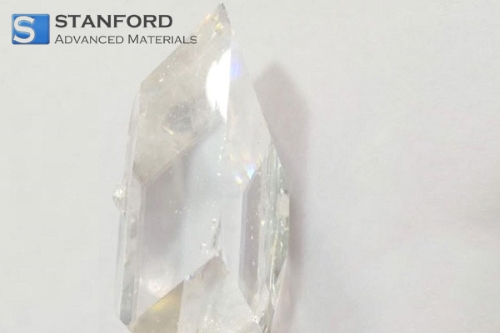Nonlinear Optics: Key Materials And Advanced Materials
Introduction
Nonlinear optical materials have received significant attention over recent years due to their important role in advancing technology in photonics, telecommunication and laser systems. These materials possess specific optical properties that allow them to interact with light in ways that linear materials cannot, thereby producing effects such as second harmonic generation (SHG), optical parametric oscillation (OPO) and self-focusing.
The following discussion examines the key nonlinear optical materials, their properties and their applications in various fields.
Understanding Nonlinear Optics
Nonlinear optics investigates the manner in which light interacts with matter when the material’s response to an electromagnetic field is not directly proportional to the field strength. This nonlinearity leads to several phenomena, including:
- Second Harmonic Generation (SHG): A process where two photons combine to form a new photon with twice the energy and half the wavelength.
 [1]
[1]
- Optical Parametric Oscillation (OPO): A process in which a nonlinear medium converts one photon into two photons of lower energy, thereby enabling wavelength tuning.
- Self-focusing: A phenomenon in which intense light beams focus themselves as a result of changes to the refractive index of the medium.
These effects make nonlinear optical materials indispensable for laser technology, telecommunication and other optical applications.
Key Nonlinear Optical Materials
1. beta-Barium Borate (BBO)
Properties: BBO is known for its high damage threshold and efficient nonlinear optical performance. It has a broad transparency range from 190 nm to 2 600 nm, which makes it suitable for applications across the ultraviolet, visible and near-infrared spectra.

Applications: BBO is typically used for frequency doubling and parametric oscillation. Its efficiency in converting the frequency of laser light is well documented, particularly in generating green light from Nd:YAG lasers.
Further Reading: From Structure to Application: Is BIBO or BBO the Better Crystal?
2. Lithium Niobate (LiNbO₃)
Properties: Lithium niobate exhibits strong electro-optic and nonlinear optical characteristics. It performs efficiently in nonlinear processes, which renders it a versatile material in photonic research.

Applications: LiNbO₃ is extensively used in optical modulators, frequency converters and waveguides. It is also applied in second harmonic generation and optical parametric oscillation, both of which are important for producing tunable laser sources.
3. Lithium Tantalate (LiTaO₃)
Properties: Similar to lithium niobate, lithium tantalate exhibits strong nonlinear optical properties and is valued for its excellent thermal stability.
Applications: LiTaO₃ is employed in frequency conversion applications. It is instrumental in second harmonic generation and other optical devices. Its high damage threshold makes it appropriate for high-power laser applications.
4. Potassium Titanyl Phosphate (KTP)
Properties: KTP features a high nonlinear optical coefficient and effective phase matching, which are critical for efficient frequency conversion.

Applications: KTP is commonly used in frequency doubling applications, especially in solid-state lasers. Its capability to generate green light from Nd:YAG lasers underpins its widespread use in laser pointer and projector technologies.
5. Bismuth Borate (BiBO)
Properties: Bismuth borate offers a high nonlinear optical coefficient and a wide transparency range. These properties support a variety of optical applications.

Applications: BiBO is used in nonlinear frequency conversion processes, particularly in high-power laser systems. Its documented efficiency in producing second harmonic light has practical benefits in various laser applications.
6. Lithium Triborate (LBO)
Properties: LBO is recognised for its high damage threshold and favourable phase matching properties, which facilitate efficient nonlinear interactions.
Applications: LBO is applied in frequency conversion and as an optical parametric oscillator. Its capacity to generate tunable laser wavelengths is noted both in academic research and industrial applications.
7. Zinc Selenide (ZnSe)
Properties: ZnSe has a considerable band gap and displays useful nonlinear optical characteristics, making it a flexible material for various optical applications.
Applications: ZnSe is frequently utilised in laser technology, particularly for infrared applications. Its nonlinear attributes are beneficial in laser systems and in optical coatings aimed at enhancing performance.
Advances in Materials Science
Recent research has contributed to the development of new nonlinear optical materials that enhance efficiency and expand application ranges. Given that these advances have quantitative benefits, several developments are worthy of special note:
1. New Crystal Structures
Researchers synthesise new crystalline materials that improve nonlinear coefficients and extend transparency ranges. For instance, bismuth-based crystals such as bismuth borate (BiBO) have demonstrated high nonlinear optical performance in frequency conversion. Similarly, potassium titanyl phosphate (KTP) and its variants continue to be the subject of detailed investigation given that they meet stringent laser system requirements.
2. Organic Nonlinear Optical Materials
Organic materials have emerged as promising candidates for nonlinear optical applications owing to their tunable properties and cost-effective synthesis. Recent studies indicate that conjugated polymers and small organic molecules can generate significant nonlinear optical responses, thereby supporting applications in photonic devices and sensors.
3. Two-Dimensional (2D) Materials
The discovery of two-dimensional materials such as graphene and transition metal dichalcogenides (TMD) has introduced novel possibilities in nonlinear optics. These materials possess distinct electronic and optical properties that suit them for use in ultrafast photonics and integrated optical circuits. Graphene, for example, has been identified as an effective saturable absorber in mode-locked lasers, thereby enabling the generation of ultrashort pulses.
Conclusion
Nonlinear optical materials play an essential role in the progress of modern photonic technologies. Materials such as beta-barium borate (BBO), lithium niobate (LiNbO₃) and potassium titanyl phosphate (KTP) provide high nonlinear coefficients, wide transparency ranges and effective phase matching, thereby supporting advancements in lasers, telecommunication and research. As the demand for more efficient optical systems increases, these important nonlinear materials will continue to contribute to scientific and technological innovations.
Stanford Advanced Materials (SAM) is a trusted supplier with extensive experience in semiconductor materials. SAM offers a wide range of optical products, including laser crystals, nonlinear optical (NLO) crystals, prisms, beam splitters, lenses and windows at competitive prices. Their catalogue includes silicon wafers, lithium niobate, lithium tantalate, sapphire, BBO, YAG, BiBO, zinc selenide, magnesium oxide and LBO. Please contact them for further information.
Reference:
[1] Second harmonic generation. (09/07/2024). In Wikipedia. https://en.wikipedia.org/wiki/Second-harmonic_generation

 Bars
Bars
 Beads & Spheres
Beads & Spheres
 Bolts & Nuts
Bolts & Nuts
 Crucibles
Crucibles
 Discs
Discs
 Fibers & Fabrics
Fibers & Fabrics
 Films
Films
 Flake
Flake
 Foams
Foams
 Foil
Foil
 Granules
Granules
 Honeycombs
Honeycombs
 Ink
Ink
 Laminate
Laminate
 Lumps
Lumps
 Meshes
Meshes
 Metallised Film
Metallised Film
 Plate
Plate
 Powders
Powders
 Rod
Rod
 Sheets
Sheets
 Single Crystals
Single Crystals
 Sputtering Target
Sputtering Target
 Tubes
Tubes
 Washer
Washer
 Wires
Wires
 Converters & Calculators
Converters & Calculators
 Chin Trento
Chin Trento



